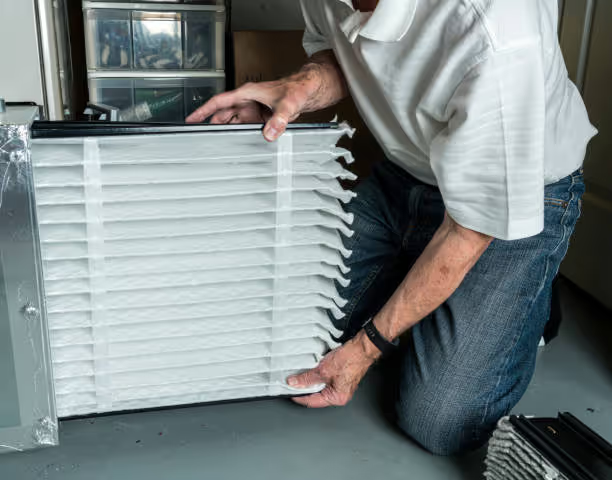AC Replacement in Mt Sinai, NY
Replacing an aging or failing air conditioning system is one of the biggest decisions a homeowner in Mt Sinai, NY can make for comfort, energy bills, and long-term home value. Mt Sinai’s humid summers, coastal salt air, and occasional nor’easter impacts accelerate wear on outdoor condensers and ductwork. This page explains when an AC replacement is recommended versus repair, how systems are evaluated, efficiency and SEER considerations, system and brand comparisons, the replacement workflow, expected timeline and cost factors, financing and rebate guidance, warranty and disposal requirements, and what to expect when requesting an on-site estimate.

When to Replace Instead of Repair
Consider replacement when one or more of the following apply:
- System age is 10-15+ years and major components (compressor, evaporator coil, control board) are failing.
- Frequent repairs or a single costly repair approaches 50% or more of a new system cost.
- Utility bills are climbing despite regular maintenance; old systems operate at much lower efficiency.
- Inconsistent cooling, hot spots, or recurring refrigerant leaks.
- The existing system uses phased-out refrigerants or non-repairable components.
- You want to upgrade to a higher SEER unit, ductless solution, or heat pump for combined heating and cooling.
Replacing a system can be the smarter financial choice over time when repair expenses, reduced efficiency, and reliability are considered.
Common AC Replacement Issues in Mt Sinai
- Corrosion of outdoor units from salt air along the Long Island coast.
- Reduced efficiency from old, undersized systems relative to today’s insulation and window standards.
- Incompatible or deteriorated ductwork causing air loss.
- Refrigerant leaks or use of older refrigerants that are being phased out.
- Poorly matched indoor/outdoor equipment resulting in short cycling.
Evaluation and Decision Process
A professional evaluation should include:
- Load calculation (Manual J) to determine correct system size for your home.
- Ductwork inspection (leakage, insulation, routing) and airflow testing.
- Refrigerant line and electrical service evaluation.
- Assessment of insulation, windows, and existing thermostat controls.
- Energy usage review and projected savings based on higher-efficiency units.
A full on-site assessment ensures the new system is properly sized and matched, preventing short cycling and maximizing efficiency.
SEER and Energy-Efficiency Considerations
- SEER (Seasonal Energy Efficiency Ratio) measures cooling efficiency. Higher SEER equals lower operating cost per cooling output.
- Modern systems commonly offer SEER ratings from mid-teens to mid-20s; heat pumps and inverter-driven mini-splits can provide even higher effective efficiency.
- In Mt Sinai’s humid climate, humidity control and part-load efficiency matter more than headline SEER alone. Variable-speed compressors and multi-stage systems maintain comfort while using less energy.
- When comparing systems, consider estimated annual energy use and payback period, not only the initial price.
System Types and Brand Comparisons
- Central Split Systems: Traditional choice for homes with existing ductwork. Look for matched indoor coil and outdoor unit pairs from reputable brands.
- Heat Pumps: Provide both heating and cooling and can be highly efficient for Long Island’s moderate winters. Eligible for additional rebates in many programs.
- Ductless Mini-Splits: Ideal for room additions, older homes without ducts, or targeted zoning. High efficiency and minimal disruption.
- Brand considerations: Reliable manufacturers include Daikin, Goodman, Bosch, Rheem, and Amana. Evaluate warranty coverage, local service availability, parts access, and features like variable-speed compressors and smart thermostat compatibility.
Replacement Workflow: What Professionals Do
- Site assessment and load calculations.
- Final equipment selection and permitting review.
- Preparation: disconnecting power, protecting property, and scheduling logistics.
- Removal of old equipment, including refrigerant recovery in compliance with EPA rules.
- Installation of new outdoor and indoor units, refrigerant charging, electrical tie-ins, and duct modifications as needed.
- System startup, airflow balancing, and thermostat programming.
- Performance testing and a walk-through to explain operation and maintenance.
Technicians should perform refrigerant recovery and recycling per federal regulations and handle all local permit requirements.
Expected Timeline and Cost Factors
- Typical timeline: 1 to 3 days for a straight swap of like-for-like equipment; longer (several days to a week) if duct modifications, electrical upgrades, or permit processing are required.
- Cost drivers: system type (central vs heat pump vs ductless), SEER rating, necessary ductwork repairs, electrical service upgrades, refrigerant type, local permitting, and disposal fees.
- Budgeting should include labor, equipment, materials, permit fees, and potential upgrades for thermostat or indoor air quality devices.
Financing and Rebate Guidance
- Homeowners in New York may qualify for state and federal incentives for high-efficiency systems and heat pumps. Incentive programs change periodically; eligibility may depend on equipment efficiency, contractor certification, and project scope.
- Many financing options are commonly available to spread equipment costs over time. When evaluating financing, compare APR, term length, and any deferred-interest terms.
- Keep documentation of equipment model numbers, efficiency ratings, and receipts to support rebate and tax credit applications.
Warranty, Disposal, and Environmental Compliance
- Verify manufacturer warranty lengths and what is covered (compressor, parts, labor). Extended warranties or service agreements can provide additional long-term protection.
- Proper disposal: refrigerant must be recovered by certified technicians and outdoor units recycled per local waste rules. Refrigerant handling must comply with EPA regulations.
- Ask for documentation of refrigerant recovery, disposal manifests, and warranty registration details after installation.
How an On-Site Estimate Typically Works
When you request an on-site estimate, expect a licensed technician to:
- Inspect your current system, ductwork, attic and outdoor unit location.
- Perform or schedule a Manual J load calculation and basic airflow checks.
- Discuss preferred system types, efficiency levels, and brand options.
- Provide a written proposal that outlines equipment, estimated timeline, scopes of work (including duct or electrical upgrades), warranty information, and a breakdown of cost factors.
- Review potential rebates and documentation you will need for incentives.
Prepare for the estimate by having recent energy bills, any maintenance records, and a list of comfort issues or problem days. This information helps the technician recommend the right equipment and accurate cost projections.
ConclusionAn AC replacement in Mt Sinai, NY is a strategic investment that improves comfort, reduces energy costs, and increases home resilience against coastal humidity and seasonal weather. A thorough, professional evaluation ensures you select the correct system type and size, maximize available rebates and warranties, and complete installation with proper disposal and regulatory compliance.
Customer Testimonials
Hear directly from homeowners who trust Bobby O’s HVAC Inc. for fast response times, honest service, and lasting comfort.











